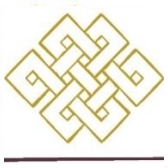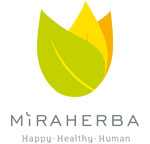.png)
The Art & Science of History Taking
23.10.2011 |
INTRODUCTION: Expectations from Physician –
The practice of medicine or providing health is not only science, but is an art.
We have to collect a lot of information from the patient to reach to a diagnosis & offer proper management for that condition.
To reach the diagnosis is science, but, to collect the information is an art.
Ayurved has explained the methods of collection of information to reach to a Nidana. It has explained 2 types of Pariksha (Examinations), viz. Rogi Pariksha (Patient evaluation) & Roga Pariksha (Disease Evaluation).
Rogi Pariksha is mainly of 3 types, viz. Darshana (observe), Sparshana (Palpate) & Prashna (Interrogate). We have to understand the Prakruti, Sara, Mental Behaviour, Agni, Koshtha & Bala of the patient before offering the treatment.
Roga Pariksha includes collection of all the vital information regarding the degree of vitiation of Dosha, Dooshya, Aama & Srotas of the individual, so that its Samprapti (Pathophysiology) is clearly understood.
Exact knowledge of Rogi (Diseased) & Roga (Disease), help the Vaidya to offer exact treatment to the patient.
Vaidya has to be very keen in getting knowledge of following eight facts: 1. Nadi (Pulse), 2. Mootra (Micturition), 3. Mala (Bowel habits), 4.Jivha (Tongue), 5. Shabda (Voice), 6. Sparsha (Texture), 7. Druk (Eyes), 8. Akruti (Stature)
Patient - Physician Relationship
Neither Ayurved nor Homeopathy, nor Allopathy but it’s Sympathy that cures the patient.
Tact, sympathy & understanding are expected of the physician, for, the patient is no mere collection of symptoms, signs, damaged organs & disturbed emotions. He is a human, fearful & hopeful, seeking relief help & reassurance.
10The American Board of Internal medicine has defined humanistic qualities as encompassing integrity, respect & compassion. The willingness to spend time to listen to all the aspects of illness of the patients, & to guide accordingly, is the key of this art.
The title Doctor comes from the Latin Decere, i.e. to teach.
The science of decision making - The decision making depends upon the history, physical examination, & laboratory & imaging data.
All this information has to be processed with our knowledge & experiences to come to any conclusions collecting correct information & leaving the unimportant, comes with practice.
The physician’s prime duty, when consulted by a patient for his ailment or disorder, is diagnosis of the latter; for without proper diagnosis, there can be no treatment or alleviation of suffering.
The word diagnosis literally means “understanding through knowledge”. The Ayurved word Nidana is also having the same meaning.
It depends on the collection and appraisal of factual data pertaining to the case by the twin processes of (1) Interrogation, history-taking, or anamnesis on the one hand, and (2) physical examination on the other.
Factual data about disease, obtained by interrogation and examination, fall into two major groups, (1) Symptoms or subjective sensations experienced by the patient; being subjective, they have to be obtained or gathered by interrogation of the patient. (2) Physical signs or objective manifestations of disease, involving alterations of structure or function; these are discovered during examination of the patient, by the physician with his unaided senses and without recourse to instruments, with the exception of the stethoscope which is permitted in the routine elicitation of physical signs.
Resort may then be had to special investigations or instrumental methods of examination, involving the use of elaborator techniques and special apparatus, in order to confirm or establish the diagnostic impression gained from a study of the symptoms and signs.
Steps in diagnosis : The investigation of a case with a view to clinical diagnosis should proceed systematically along the following lines :
(1) The history, involving the elicitation and documentation of the subjective manifestations of disease, as well as of any further information relating to the family or past history, which may be have a bearing on the case.
(2) Physical examination of the patient, involving the elicitation and recording of the physical signs of the disease.
(3) From the mass of data so called, to reject the irrelevant or unimportant and select the pertinent or important data for further correlation or application.
(4) A careful analysis of the selected data with a view to arriving at some tentative conclusion about the diagnosis. A proper interpretation of the data will depend to a great extent on the knowledge, reasoning power and experience of the observer and on the accuracy and completeness of the data. Such an analysis will aid the examiner in carrying out further investigation with discrimination, thus saving time, expense and discomfort to the patietnt.
(5) Any special investigations, considered necessary for a final diagnosis of the disease, are carried out. These accessory aids to diagnosis must be used to supplement and not replace the time-honoured methods of interrogation and physical examination. Although investigation of a case has to be through, it need not be unnecessarily tedious, uneconomical or injurious to the patient. In the case of the certain symptoms such as unexplained fever or loss of weight, investigation may have to be intensive or elaborate.
HISTORY-TAKING
The history is a record or “recitation” of the patient’s symptoms. In diagnosis, the medical history is all-important frequently surpassing in its diagnostic importance even a thorough physical examination.
The ability to elicit a good history comes with years of experience and knowledge; it cannot be mastered in the classroom. Good history-taking necessitates patience, understanding tact, sympathy, knowledge, experience, ratiocination (reasoning) and thoroughness on the part of the interrogator.
The importance of a good history lies in the following:
(1) It frequently affords a leading the right direction or clue to diagnosis. Thus, elicitation of the various characteristics of a pain may suggest its true nature as one of angina pectoris, renal colic, acute appendicitis or duodenal ulcer.
(2) It rules out of eliminates certain diagnostic possibilities.
(3) It suggests further avenues of investigation.
(4) It helps to focus the observer’s attention to the system or systems involved.
(5) Since symptoms usually precede signs, the history may afford earlier proof or disease than a clinical examination.
Rules to observe: ‘Listen to the patient, just to hear is not enough’. The history, in view of its importance, must be obtained by the physician himself and not left to an assistant or secretary. It should be a confidential tete-a-tete between the doctor and the patient; in the presence of others, the patient may become reticent and withhold information of value. The patient should be encouraged to recite his story in his own unhurried way, without interference or interruption, unless of course he rambles on or digresses from the issue at hand; garrulous or loquacious patients have to be tactfully reminded at times of the subject under consideration. Leading questions are best avoided. The patient’s own ex
The history must be accurate, truthful, unbiased. Direct questioning, cross- questioning or special interrogation may prove necessary at times, either to elicit symptoms deliberately or unintentionally omitted by the patient, or to acquire information about the family history or personal habits of the patient. A good history must be concise and complete. It is advisable to eliminate all redundant or
unimportant data, suppress or minimize the less important, and emphasize or elaborate on the important or relevant data. Keen observation of the patient must begin with the first contact or interview. The personality and emotional make-up of the individual, whether oversensitive, apprehensive, embarrassed, undependable or placid, must be carefully noted. Selective or discriminative questioning of the patient is only justified after years of experience of history-taking.
TIPS IN HISTORY-TAKING
The history of a case is usually composed of the following items : (1) vital of preliminary data about the patient, such as name, age, sex, race, occupatin, address and marital status; (2) nature and duration of the chief complaint or presenting symptom; (3) family history; (4) past history or history of past illness, injuries, operations, etc; (5) personal history, dealing ainly with personal habits, marital history and occupational history; (6) history of present illness, with a detailed analysis of each symptom; (7) special or specific questioning about symptoms pertaining to the system involved; and (8) a short resume of the accumulated data with the diagnostic impressions of the examiner.
Regarding arrangement of these various items in the history, a slightly different order is recommended.
It is convenient to look upon disease as a spectrum. At one end there are diseases due to infections or nutritional deficiencies or due to environmental factors (nature). At the other end there are diseases which are mostly genetic in origin (nature).
PRELIMINARY DATA
The name, age, sex, race, occupation and address of the patient are entered at the top of each history sheet.
Age : The age of the patient may serve to suggest certain diagnostic possibilities and rule out others. Whilst degenerative neoplastic and vascular ailments are more common in the middle-aged or elderly, infectious fevers and congenital anomalies are commoner in childhood.
Sex : Certain diseases, such as cerebral haemorrhage, ischaemic heart disease, haemophilia and malignancy of tongue and stomach show a special affinity for the
male sex. Others, such as thyroid disorders and mammary cancer, show a similar predilection for the female sex.
Occupation or trade of the patient may at times afford a clue to the diagnosis. Handedness is important in neurological disorders.
Residential address of the patient may serve to focus one’s attention on the various environmental factors which may be involved and may also prove useful in the subsequent follow-up of the case.
CHIEF COMPLAINT
The first step in history-taking, after recording the preliminary data, is to state, quite briefly, the exact nature and duration of the chief complaint or presenting symptoms (e.g. “shortness of breath for two days”, or “pain in the left arm for three weeks”). It is better to employ ex
In case the patient is unable to furnish the chief complaint because of loss of speech, coma, moribund condition, childhood or language difficulty, the pertinent information may be acquired from a friend or relative of the patient or deduced by observation.
The exact duration of the chief complaint is of considerable importance in diagnosis. For instance, the clinical significance of an abdominal pain of two hours’ duration is obviously quite different from that of one of several months’ or years’ duration.
HISTORY OF PRESENT ILLNESS
In this section, (1) the chief complaint or presenting symptom of the illness is studied in its entirely, the patient being asked to sequentially elaborate on its onset, duration, behaviour and progress. A detailed analysis of the symptom at this stage will serve to narrow down the diagnostic possibilities. (2) Related symptoms or
attendant complaints, either volunteered by the patient or dragged out of him by tactful interrogation, are then analyzed in turn and recorded.
Each symptom (e.g. abdominal pain) is taken in turn and studied from the points of view of time of onset, mode of onset, location, character, intensity, duration, behaviour, relation with the time of day, relation to meals and exertion, aggravating factors, relieving factors, and relation to associated symptoms. The question of previous treatments should also be enquired into.
Whilst elicting an orderly review of other symptoms in relation to the system affected (say the gastrointestinal tract), attention must be specially focused on symptoms usually related to the system affected. e.g., appetite, taste, breath, flatulence, belching, hiccups, dysphagia, nausea, vomiting, bowel habit, abdominal discomfort or pain, etc. The relationship of each symptom to the main complaint is established, e.g.Did loss of appetite precede abdominal pain? Did constipation precede or follow abdominal discomfort?
FAMILY HISTORY
The family history may yield valuable data, helpful in explaining the health problems of the patient. It affords information about the genotype or “inherited make- up” of the patient. The family history deals with the nature, duration and outcome of illness in the close relatives of the patient, the ages of living family members and the ages at death of the lost ones.
Consanguinity, in the parents must also be enquired into.
Enquiries about the familial incidence of disease should apply to close relatives only (parents, grand-parents, brothers, sisters, aunts, uncles and cousins). The longevity or average life-span of members of the patient’s family should be ascertained; whilst some families are poverbially long-lived, in others premature deaths from cerebrovascular and cardiovascular accidents are common.
The marital history is best included in this section. Enquiries should be made about the health of the spouse, number of children, pregnancies, miscarriages and abortions.
PAST HISTORY
This includes a review of (1) past illness, with a pointed reference to important entities such as rheumatic fever, syphilis, epileptic fits or convulsions, hypertension, or ischaemic heart disease; (2) injuries or traumatic lesions; (3) previous operations; (4) childhood diseases; (5) the countries of residence, certain diseases like malaria, ankylostomiasis, amoebiasis, and kala-azar being more prevalent in the tropics and sub-tropics; (6) countries visited during past travels; (7) ingestion, application or parenteral administration of toxic or potentially toxic drugs in the past; and (8) history of sexual exposure; (9) history of blood transfusion.
PERSONAL HISTORY
This is particularly important in cases of nervous, psychosomatic and nutritional disorders.
(1) Personal habits : Hours of sleep, recreation, hobbies, bowel actions, exercise, hours of work, menses, etc.
(2) Addictions : Tea, coffee, alcohol, smoking or chewing of tobacco, addiction to brown sugar, heroine or cocaine, and the habitual use of sleeping pills, cathartics, aphrodisiacs or cocanine, and the habitual use of sleeping pills, cathartics, aphrodisiacs or stimulants. The exact quantity and nature of the offending substance must be ascertained and recorded (e.g., 20 cigarettes a day, or 2 pegs of whisky every evening). Information of this type may be useful in cases of thromboangitis obliterans, duodental ulcer, delirium tremens, polyneuritis, lung cancer, myocardial infarction, sudden blindness, cirrhosis of liver, vitamin deficiencies, blood dyscrasias, Korsakoff’s psychosis and chronic pharyngitis.
(3) Occupations history : This is important because of particular hazards associated with certain occupations e.g. : (1) Neurological disease due to toxic occupational hazards, e.g., peripheral neuropathy due to lead or acrylamide or hexacarbon solvents. (2) Respiratory disorders such as pneumoconiosis in those exposed to organic dusts such as coal or silica, and cancer of the lung in asbestos workers; allergic alveolitis due to inhalation or organic airbone substances, e.g. farmer’s or bird fancier’s lung; occupational asthama as a result of exposure to
17
allergens at work for instance flour mill workers, printers and those handling furs and feathers. (3) Occupational liver disease. This includes hepatocellular injury from solvents used in industry such as carbon tetrachloride, tetrachlorethane or toluene, or from exposure to trinitrotoluence in ammunition workers. (4) Radiation exposure in nuclear power stations and research establishments.
The following features are worth investigating when dealing with occupational hazards: the presence of dusts, over-crowding, lack of sanitary facilities, poor hygiene, presence of insects, gas contaminations, abnormal temperatures, defective ventilation or lighting, and hours of work and rest.
(4) Residential history : The place of residence, whether urban or rual, whether inland, mountainous or close to the sea, and details of ventilation, sanitation, heating, drainage, cleanliness, dampness, food, water supply and over-crowding should all be enquired into; the existence of cases of infectious diseases in the neighboured should be ascertained.
(5) Social history: The social life, economic status, side activities, sex experiences, emotional make-up and psychological conflicts of the patient should be enquired into with tact and understandings. The social history is important in view of the unquestionable influence of emotional maladjustments on the causation of disease. When elicited with care, the personal history will reveal the personality of the individual and thus provide a better evaluation of the history.
SPECIAL OR SYSTEMIC INTERROGATION
Depending on which system or systems of the body are considered involved, on the basis of the patient’s history, specific interrogation of the patient is carried out with a view to eliciting the maximum amount of information about that system. For instance, with a chief complaint of abdominal pain, suspicion would naturally fall on the alimentary system and specific questioning would be directed towards symptoms like appetite, flatulence, nausea, vomiting, eructations, constipation and diarrhoea.
RESUME AND DIAGNOSTIC IMPRESSIONS
At the end of the history, a short summary outlining the salient or important facts of the case is prepared. The diagnostic impressions or tentative conclusions of
the examiner are then added. Routine adoption of such a plan tends to narrow down the subsequent field of exploration and cut out unnecessary examinations or investigations.
This is an extraction of our manuel for our students "Practical Guidelines for Therapists".
The authors are Dr. Ranjit G. Nimbalkar M.D. (Rog Nidan - Pathology) and Dr. Vineeta V. Deshmukh M.D.(Samhita) Ph.D.
Both are academics of Ayurveda Academy of Yoga in Daily Life.

AYURVEDA ACADEMY of YOGA IN DAILY LIFE
Montigasse 13, A-1170 Vienna, Austria
Tel/Fax: +43-1-485 37 02
mob. +43 676 391 00 07
info@AyurvedaAcademy.org
www.AyurvedaAcademy.org
Titelbild: © von gudenkoa – Fotolia.com migrated to Adobe Stock

.jpg)


.png)

.jpg)


